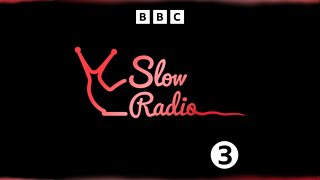
The Last Oozings - Cider Making in Somerset
As Matthew Bryant makes cider in the slow old way, Radio 3 captures the sounds, from the apples dropping into buckets to the singing of the cider as it ferments in the barrels.
Britain has lost 90% of its traditional orchards. So, seven years ago the villagers of Haselbury Plucknett planted a Somerset orchard: 35 cider apple trees, all old varieties with names as gorgeous as their colours - Kingston Black, Sweet Crimson King, Slack-me-Girdle.
"Make sure a rainbow goes into your cider barrel," says Matthew Bryant, filling his bucket with windfalls.
In the tin shed at the back of his house Bryant, the cider expert and author James Crowden and friends gather to turn apples into cider, in the slow old way - and Radio 3 gathers all the sounds of the process. Apples drum as they pour into an ancient apple mill. Someone cranks the wheel and crushed apples splatter out as pomace.
Matthew and James layer straw on the cider press, built in about 1850. They spread the pomace on the straw adding layers to build the 'cheese'. As the crew screws down the beam, apple juice gushes. They wind it up again. Matthew takes a huge knife, cuts the splayed sides of the crushed cheese, placing the trimmings on top. The pressing begins again, the torrent of juice subsides until it drips like raindrops from a thatched roof. John Keats witnessed this 200 years ago. In To Autumn he writes: "Or by a cyder-press, with patient look,/ Thou watchest the last oozings hours by hours."
The juice goes straight into the barrels. "Just leave it," Matthew says. "The natural yeasts will work their wonders. As it ferments, it fizzes and hisses. When that singing has stopped, it's time to bung the barrel."
The cider will be drinkable by new year, but it's best left until you hear the cuckoo in the spring. "What's wonderful," says Matthew , "is that that's when the trees are coming into blossom, and the whole thing is starting again."
Producer: Julian May

